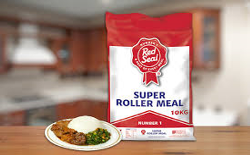National Maize Roller Meal Subsidy Programme
NEWS ARTICLE
By Tasiyana Siavhundu
Gweru, Zimbabwe

Erratic rainfalls received in the 2018-2019 agricultural season left Zimbabwe a net-importer of grain, exacerbating the lingering economic turmoil in the struggling Sub-Saharan nation. Maize produce in the 2018-2019 season together with the season’s opening stocks are excessively inadequate to feed the nearly fifteen million populace. Worse still, the 2019-2020 agricultural season is by all odds anticipated not to produce an optimal harvest. Rains have been received late in most parts of the country’s arable regions and rains received so far have been intermittent.
It is against this background that the government of Zimbabwe promulgated, in the last quarter of 2019, a subsidy programme meant to improve availability of the staple food ingredient at the same time ensuring that indigent citizens have access to affordable maize meal. The World Trade Organisation (WTO) defines a subsidy as a financial contribution by a government, or agent of a government, that confers a benefit on its recipients. A subsidy is the opposite of a tax: the government gives money to institutional units who trade concerned goods and services, rather than taking it away from them (Leach, 2004). Robinson (1967) asserts that the word “subsidy” is by all odds one of the most commonly used in economic lexicon. It has a faintly opprobrious connotation and is more often than not used as an unkind epithet by opponents of some proposed economic policy.
The maize roller meal subsidy programme was designed in such a way that Zimbabwe’s Grain Marketing Board (GMB) allocates maize to licenced millers at a subsidised price of Z$4000.00 per metric ton. Millers are in turn required to distribute to retailers who will then sell mealie meal to ultimate consumers at a price which is 50% of the market price. The gazetted price at which millers sell to retailers is Z$45.00 per 10kg packet and retailers are required to sell the same packet at a maximum price of Z$50.00, realising a maximum possible margin of 10%. The government would pay licensed millers subsidy amounts commensurate to an agreed extraction rate of 80% after verification that production has taken place. Maize purchased by licensed miller from the GMB should be used solely for the production of mealie meal.
More…
To read entire article, click here
How to cite this article: Siavhundu, T. (2020). Zimbabwe rolls out National Maize Roller Meal Subsidy Programme; PM World Journal, Vol. IX, Issue II, February. Available online at https://pmworldlibrary.net/wp-content/uploads/2020/01/pmwj90-Feb2020-Siavhundu-zimbabwe-maize-meal-subsidy-programme-news.pdf
About the Author

Tasiyana Siavhundu
Gweru, Zimbabwe
![]()
Tasiyana Siavhundu is a member of the Project Management Zimbabwe (PMZ) with vast qualifications and experience in Project Management, Economics, Taxation as well as Investments and Portfolio Management. He is a holder of a B.Sc. Honours Degree in Economics, Master of Commerce Degree in Economics, Post-Graduate Diploma in Project Management, Executive Certificate in Investments and Portfolio Management, Advanced Certificate in Taxation and many other qualifications.
Tasiyana has worked both in the private and public sectors in Zimbabwe. He is now employed as a Revenue Officer with the Zimbabwe Revenue Authority (ZIMRA). He is very passionate about research work and has interests in the fields of Economics (particularly Public Economics), Project Management and Taxation.
Tasiyana Siavhundu can be directly contacted by email at tsiavhundu@gmail.com
To view other works by this author, visit his author showcase in the PM World Library at https://pmworldlibrary.net/authors/tasiyana-siavhundu/









